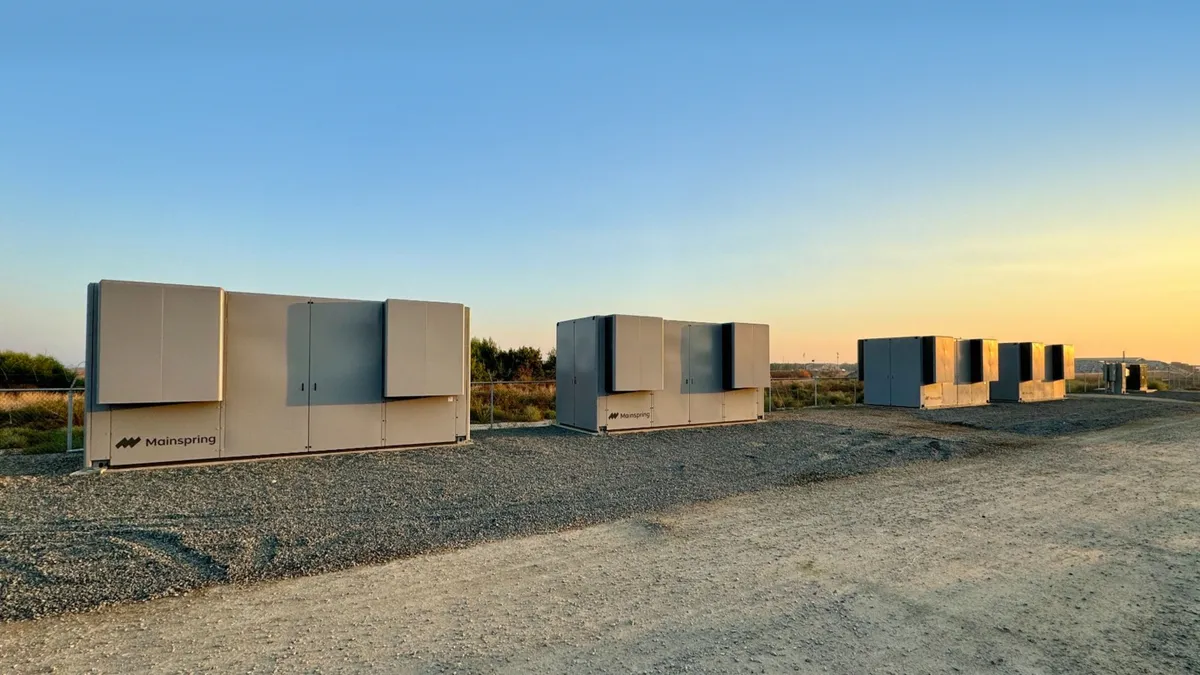Dive Brief:
-
Schneider Electric and Mainspring Energy announced a partnership to integrate Mainspring's fuel-flexible linear generator into Schneider's microgrid offerings at the CERAWeek Conference.
-
The generator should appeal to a variety of businesses looking to install microgrids thanks to its modular design, reduced emissions and its potential to run on multiple fuels — including zero-carbon fuels such as ammonia or hydrogen, according to Bala Vinayagam, senior vice president for Schneider Electric's microgrid line of business.
-
Mainspring Energy has grown rapidly since its 2020 commercial launch and is exploring projects with utilities as well as commercial and industrial customers, Mainspring founder and CEO Shannon Miller said.
Dive Insight:
A growing number of large electric customers are tired of waiting for reliable, 24-7 clean energy and looking for a round-the-clock solution they can install themselves. And Schneider Electric believes Mainspring's linear generator takes the company one step closer to offering the microgrid solution customers have been looking for.
Many of the Schneider's microgrid customers have chosen that path because they have been unable to quickly meet a large need for power, Vinayagam said. Projects such as data centers, or charging systems for commercial fleets of electric vehicles “are stuck today,” he said. “Getting a transformer takes two to three years, and getting a substation takes 10 to 15 years sometimes.”
These customers are also concerned about reliability and sustainability, Vinayagam said. And this is where Schneider Electric believes Mainspring's linear generator can fill multiple gaps in the energy market. A linear generator directly converts motion along a straight line into electricity using chemical or thermal energy, according to Mainspring. The company says its linear generator uses a low-temperature reaction of air and fuel to drive magnets through copper coils to efficiently produce electricity.
The generator can scale up or down to meet power requirements ranging from a few hundred kW to 10 MW or more — though Vinayagam sees a potential “sweet spot” in the 1-MW to 10-MW range.
The generators also track energy use and can ramp up or down quickly in response to changes in power supply or demand. And in addition to their ability to use nearly any fuel — including clean fuels like green ammonia or hydrogen — they produce fewer emissions when using conventional fuels like natural gas, relative to traditional backup generators, Vinayagam said.
“Generally customers are building for resilience, and they want to make sure they can deploy infrastructure with less impact on CO2 and NOx, and both natural gas and diesel have that challenge,” Vinayagam said. The linear generators, he said, “present a very interesting value proposition. They're able to check a lot of boxes.”
Mainspring similarly believes that the partnership represents a solution to a critical problem. “Big picture, customers need more power,” Miller said. “There's a lot of growth across EV charging and data centers, and microgrids allow customers to get power quickly.”
Mainspring has deployed “tens of megawatts” of generators over the past four years, primarily in behind-the-meter commercial applications, Miller said. The company has seen significant adoption from customers such as dairy farms and landfills, which are able to capture waste methane from their processes and use it to fuel the generator. Mainspring has already participated in the construction of microgrids to support EV charging stations at logistics centers, and expects to see significant growth from data centers in the coming years, Miller said.
But utilities have also taken an interest in the generator's potential microgrid applications, especially in areas where deploying a micogrid may reduce transmission needs and costs, Miller said. Mainspring has discussed the possibility of using its generators to replace natural gas peaker plants — though Miller said these are still early-stage conversations.
Correction: A previous version of this story misstated the amount of generators Mainspring has deployed in the past four years. It is tens of megawatts.














